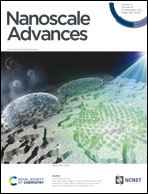Fabrication of a 100 × 100 mm2 nanometer-thick graphite pellicle for extreme ultraviolet lithography by a peel-off and camphor-supported transfer approach†
Abstract
An extreme ultraviolet (EUV) lithography pellicle is used to physically protect a mask from contaminants during the EUV exposure process and needs to have a high EUV transmittance. The EUV pellicle should be fabricated using a freestanding thin film with several tens of nanometer thickness in an area of 110 × 142 mm2, which is a challenging task. Here, we propose a peel-off approach to directly detach the nanometer-thick graphite film (NGF)/Ni film from SiO2/Si wafer and significantly shorten the etching time of the Ni film. Combined with the residue-damage-free transfer method that used camphor as a supporting layer, we successfully fabricated a large-area (100 × 100 mm2) NGF pellicle with a thickness of ∼20 nm, and an EUV transmittance of ∼87.2%.



 Please wait while we load your content...
Please wait while we load your content...